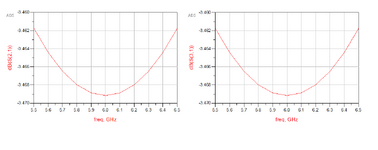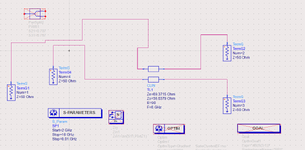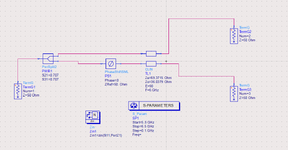jadnounyah
Member level 1

So for a coupling coefficient of 10 dB (essentially -10dB), I calculated the odd and even mode impedances of the ideal coupler to be as shown in the figure below for Zo and Ze respectively. Ideally running an Sparameter simulation is supposed to give me an S31 value of the -10 dB since it refers to the coupling coefficient but it gives me some other way off value which is surprising cause I don't know what the issue could be. Any help will be greatly appreciated. Find attached the schematic setup for the coupler analysis and the results upon performing simulations at 6 GHz.





